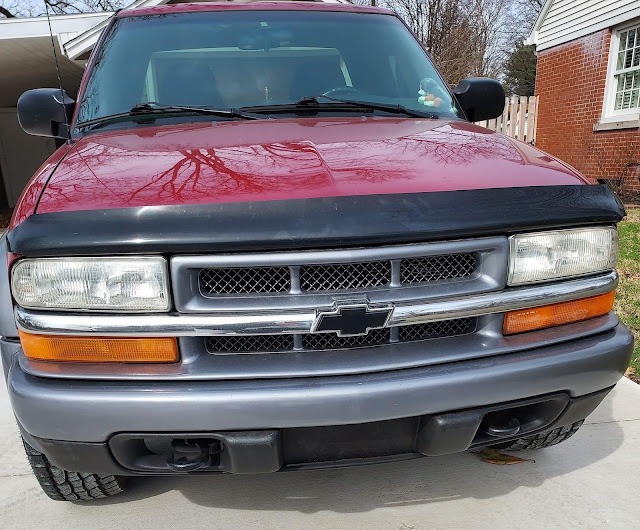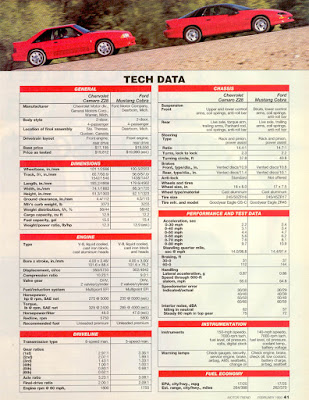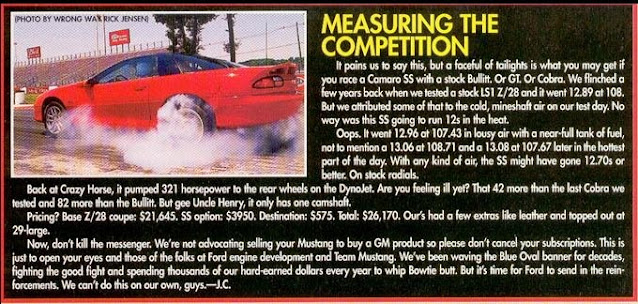ZR2 - “High Rider Off Road Performance Package”
(Codename: HighWider)
Some folks probably won’t like GM’s S-series “ZR2” pickup, but a very select few will absolutely adore it. Why? Because it is very specialized- It has a special frame, special tires, special wheels, special axles, special shocks, special springs. Built to be especially good off-road and the chassis is designed with that as the special prerogative. Ride quality, on-road handling, fuel mileage and ease of climbing in and out all suffer as a result of its off-road orientation. That’s unfortunate for most, but off-road enthusiasts will revel in the things most see as shortcomings.
The rest of the Chevy S-10 line surely has considerably wider and more practical appeal. Sure Chevrolet sold thousands of S-10 trucks in a multitude of configurations. There are regular cab models with short and long beds and an extended cab with a short bed as well as quad cab models. 2wd and 4wd availability, in base and LS trim. There’s an S-10 pickup for just about anyone and everyone, but the ZR2 “off-road” RPO code is for the off-road enthusiast that need something a little taller, a little stronger, a little more aggressive, a little more rugged, a little more compact 4x4 sport truck that performs a little better off-road.
This is one brawny little truck, with deeply treaded and aggressive 31” all-terrain rubber at all four corners, only partially shaded by wide fender flares. It’s meant to look like a custom off-road conversion, with big tires stuffed under a factory 3” lifted suspension, all of it too much to fit under the standard bodywork. If you’ve seen monster trucks, you get the idea, though only on a smaller scale.
The ZR2 is no poser, however, although the body appears standard issue, it actually has unique front and rear outer fenders, different than the other S-series body panels. The ZR2 suspension package is more than just a different set of shocks and springs for the independent front/live axle rear suspension. Chevy starts with a frame very different than other production S-10 trucks. Not only more rugged than the standard frame, but also broader 4” wider track. That wider look isn’t just from wheels with big tires and greater offset. The suspension raises the truck 3” higher and, if you crawl underneath, you’ll see 46-mm Bilstein high-pressure gas shock absorbers, a 28-mm front anti-roll bar, and a rear-axle track bar. GM also adds carbon fiber underbody skid-plates to protect the tender bits underneath, heavy duty bearings, as well as drivetrain components being tougher than the standard. ZR2 axles feature a lower 3.73 gear ratio for quicker acceleration and improved pulling power off road, housed in the bigger, stronger 8.625 rear locking axle (pre-‘99 models had the 8.5 rear) with hardened axles, as well as an aluminum driveshaft to reduce parasitic drag and weight.
The ZR2 boasts the most powerful version of Chevy’s 4.3-liter Vortec V6, rated at just shy of 200 horsepower and 250 lb-ft of torque and either a 4-speed overdrive electronically controlled automatic transmission ($1,070 option) or the standard 5-speed overdrive manual gearbox. GM includes a special spare tire winch (for the underbed spare) and taller jack to accommodate the added height. The ZR2 is available only in LS trim in regular cab and extended cab models.
Open the door of the ZR2 and climb on in, the operative word being climb. The floor is a full 2 feet from the ground, a rather healthy step up. Grab the wheel and hoist yourself in. The front seat passenger gets an “oh sh*t” grab bar on the dash and over the door, and can slide comfortably into the bucket seat. A bulge in the floor, for exhaust routing does rob a bit of foot room, however, reminiscent of the 3rd Gen Camaro-Firebird F-body twins. Anyone so unlucky as to draw the jump seat in the extended cab will find it’s not as easy to get in and is a bit snug for adults, but once you get settled isn’t so bad really. The extended cab has a third door opening on the driver’s side and the jump seat mounts sideways on the side panel behind the passenger’s seat. Having the third door on the driver’s side is more convenient for the driver to toss stuff behind the seats.
The front buckets are covered in classy velour with patterned inserts. The center console is tall, with a covered storage bin, CD/tape case rack, well-designed dual cupholders, and an open tray. The optional cassette player is mounted under the dashboard, while the optional CD player is integrated into the AM/FM radio.
Buttons controlling the 4×4 transfer case are located on the dash close to the steering wheel. ZR2 LS trim models are well equipped, with power remote locks, power windows, and heated power mirrors, a sliding rear window, floor mats, and air conditioning.
The instrument panel, radio controls and heating, ventilation and air conditioning controls should look familiar to anyone who has been in any GM truck or sport-utility of the era. They all appear plucked from the same bin. That’s not bad, however, as General Motors qualifies for the most improved truck ergonomics of the sluggard.
One should pay heed any time a manufacturer states that its product has a “very firm ride.” It’s safe to assume they really mean it and, in the case of the ZR2, that assumption would be correct. The wheels may be aluminum, but there’s a lot of weight in the rubber. Firm springs keep the suspension from bottoming in the outback, but they also pass along every dimple and bump on the road. Firm shock absorbers keep the unsprung wheel-and-tire mass in check, but relay every bump in the road. The big 31×10.50R15 BF Goodrich Radial All-Terrain T/As take on an inertial life of their own; the driver can always feel those tires, reacting to bumps, bouncing with undamped sidewall flex, and generally doing their own thing.
Going around corners on pavement, the ZR2 exhibits heavy understeer at the limit. Despite the power steering, hustling down a winding road is a lot of work. The gnarly tires have a lot of void, but they’re still fairly grippy on pavement. Apply too much power, particularly on slick or dusty pavement, and the rear end can ice skate right around you and you’ll find your front end trying to keep up with your tail end. Because the four-wheel-drive is a part-time system, it will not provide handling assistance like a full-time system.
Of course, to a real truck driver, a full-time system would be effete. Real men and women can switch their own 4wd on and off, even if by button instead of by lever and even if there are autolocking hubs that don’t require one to get muddy knees to manually lock each front hub. That folks, is progress…
The engine definitely provides plenty torque. The 4.3 Vortec is a big V6 engine at 262 cubic-inches, and essentially an old 350 V8 with the two rear cylinders removed and added balance-stabilizer shaft. At idle it rolls out the tailpipe in a ringing metallic bass, and roars at full throttle all the way to the 5100-rpm redline where it lunges ahead to the next gear. It’s happiest at lower rpm where the ZR2’s torque assures that it’s no sluggard.
In the dirt, with the transfer case in 4×4, the ZR2 will go places seemingly impossible, climbing hills, traversing ravines and scrambling over rocks. Here the unsprung mass isn’t the disadvantage it is on the road, because at the slower speeds you should be driving in the rough, the weight has time to react. The tread that’s less than ideal on the highway is perfect for gripping the dirt.
On road or off, the ZR2 has one exceptional talent: Getting itself dirty. The flares do only a limited amount of good. The first muddy puddle provides all the ammunition needed to paint the flanks, and even the side windows.
Of course, there’s nothing that can be said against the ZR2 pickup that will hold any sway with anyone intent on buying one, whether for the macho image or for actually going off road. In the first case, the rough ride and the big step up are inconveniences to revel in, like coming home from a weekend camping trip with three-day stubble. For the person who uses it, as Chevrolet recommends, “for serious recreational off-road driving,” it’s simply part and parcel of the experience. You can’t do the work without the tool, and for the select few who want or need an authentic off-road compact pickup truck, the Chevrolet S-10 ZR2 pickup is up to the task.

















